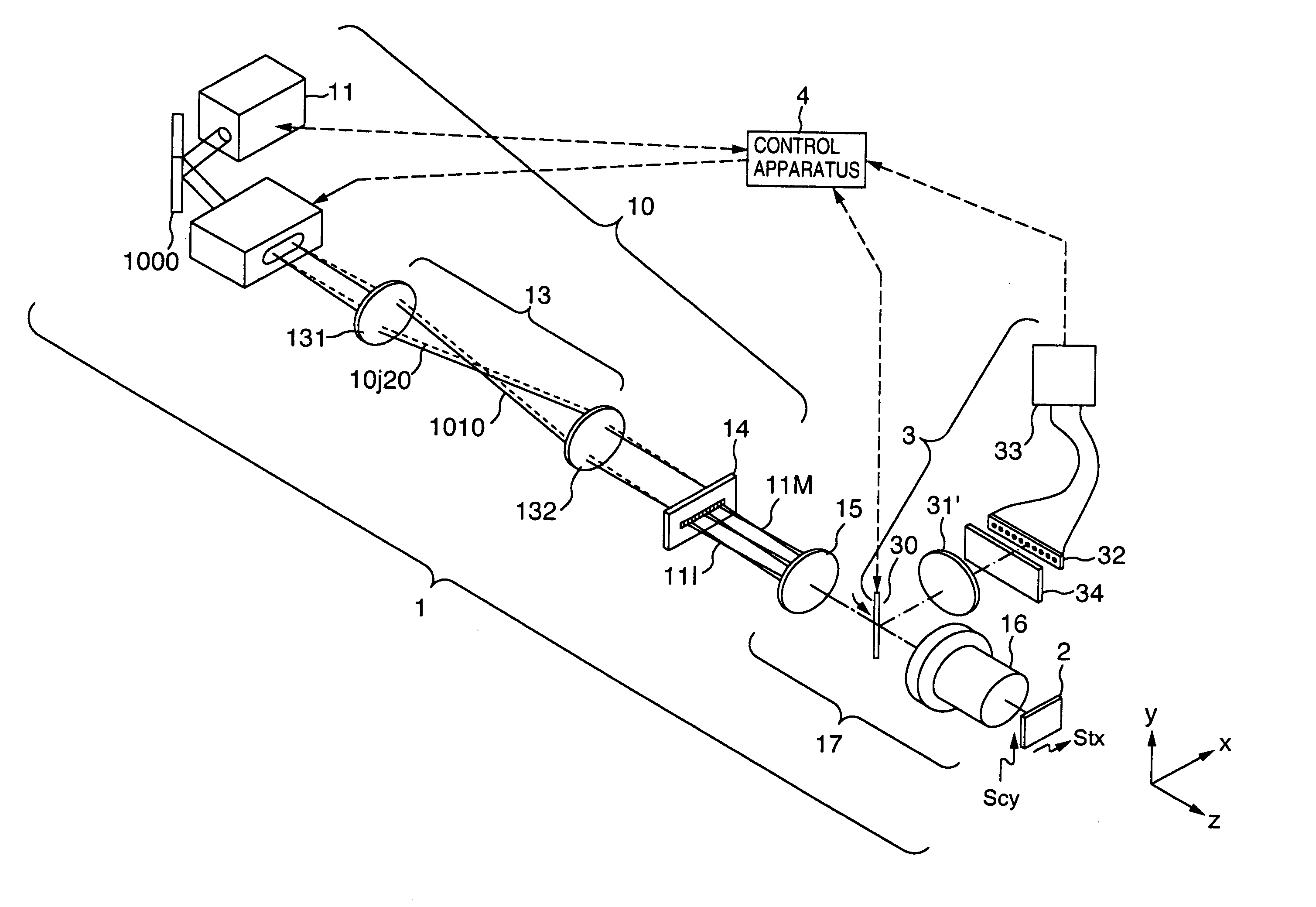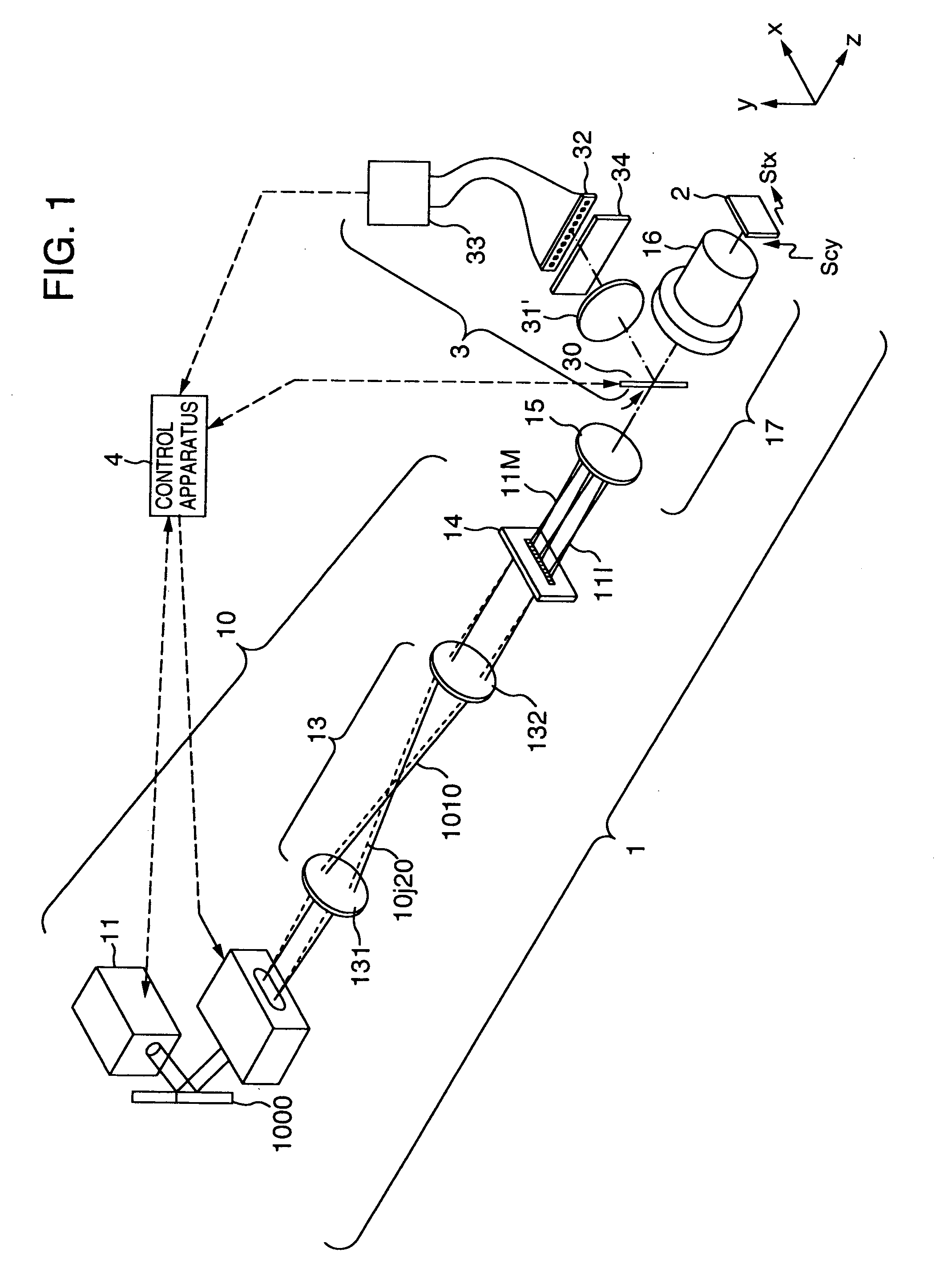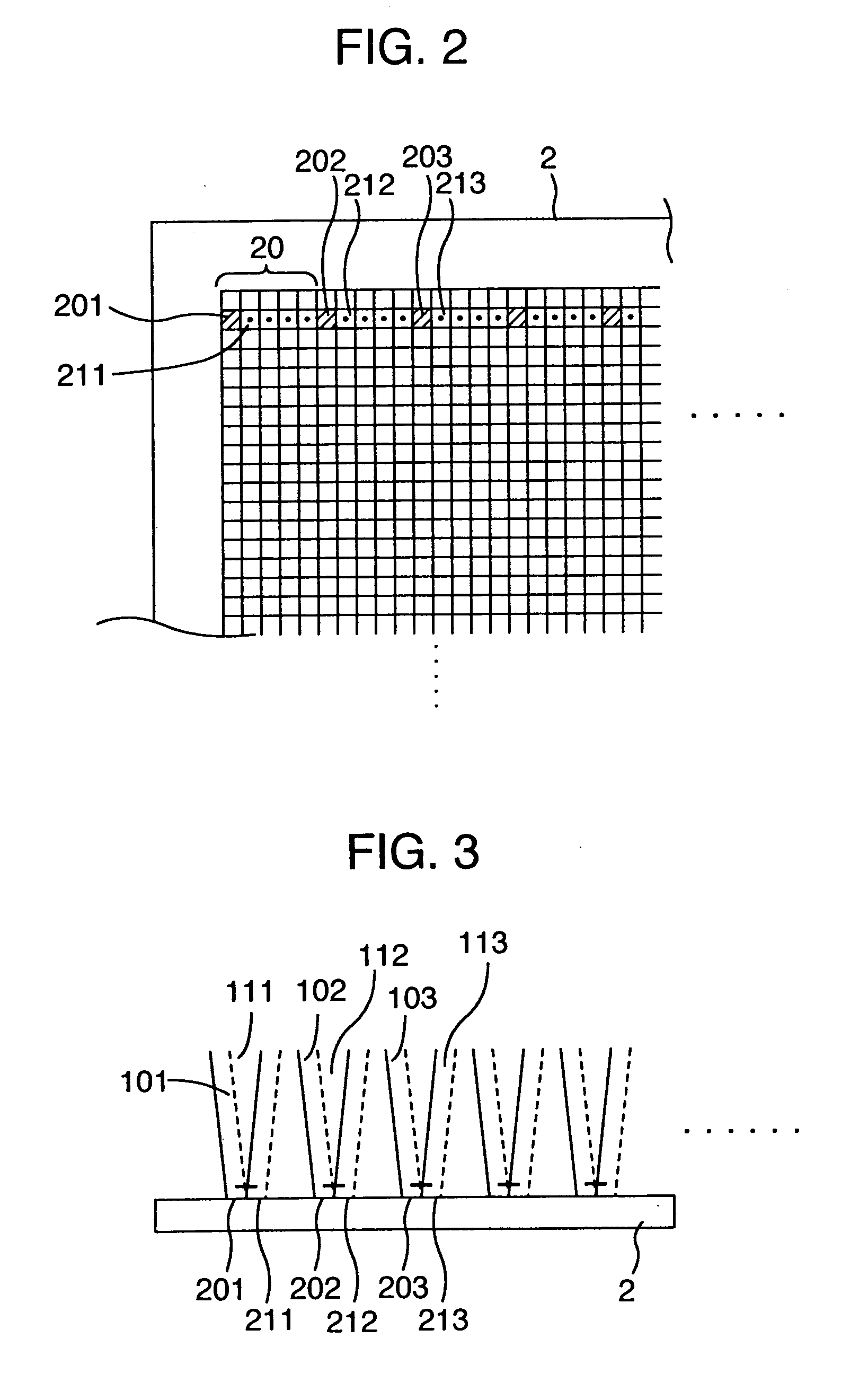Method of inspecting a DNA chip
- Summary
- Abstract
- Description
- Claims
- Application Information
AI Technical Summary
Benefits of technology
Problems solved by technology
Method used
Image
Examples
Embodiment Construction
[0163]FIG. 1 is a diagram for illustrating an embodiment in the present invention. The reference numerals denote the following configuration components: 1 A multi-spot excitation lights-irradiating system for forming multi-spot excitation lights to irradiate a DNA chip 2 with the excitation lights so that a fluorescent light detection can be executed, 3 a fluorescent light detecting system for detecting fluorescent lights generated by the multi-spot excitation lights, 11 an excitation light-source including an excitation light light-source and an excitation light beam forming optical system. A He—Ne laser light beam is formed into a desired longitudinal-to-transverse ratio of the beam diameter by two cylindrical lenses having different focal lengths, then being launched into an AO deflector 12 through a mirror 1000. The AO deflector 12 includes a terminal of a frequency-ωhigh-frequency voltage applied to a quartz oscillator, and an input terminal of an amplitude signal the frequency...
PUM
| Property | Measurement | Unit |
|---|---|---|
| Length | aaaaa | aaaaa |
| Length | aaaaa | aaaaa |
| Time | aaaaa | aaaaa |
Abstract
Description
Claims
Application Information
 Login to View More
Login to View More - R&D
- Intellectual Property
- Life Sciences
- Materials
- Tech Scout
- Unparalleled Data Quality
- Higher Quality Content
- 60% Fewer Hallucinations
Browse by: Latest US Patents, China's latest patents, Technical Efficacy Thesaurus, Application Domain, Technology Topic, Popular Technical Reports.
© 2025 PatSnap. All rights reserved.Legal|Privacy policy|Modern Slavery Act Transparency Statement|Sitemap|About US| Contact US: help@patsnap.com



